Flooring Done Right: How to Avoid Common Mistakes in Your Sydney Renovation
When most people plan a renovation, they dive straight into the fun stuff – kitchen layouts, bathroom finishes, colour palettes. Flooring tends to come further down the list. But here’s the thing: flooring isn’t just a backdrop. It’s the foundation that sets the tone for your entire home. The right choice feels effortless, lasting, and beautiful. The wrong one can become a daily frustration you notice with every step.
Across our Northern Beaches projects, flooring is where small decisions have big consequences. With a solid plan, most problems never show up. Here’s what to watch for – the pitfalls that trip up many projects, the technical details that matter more than they seem, and how considered design sets the whole home up to feel calm and cohesive.
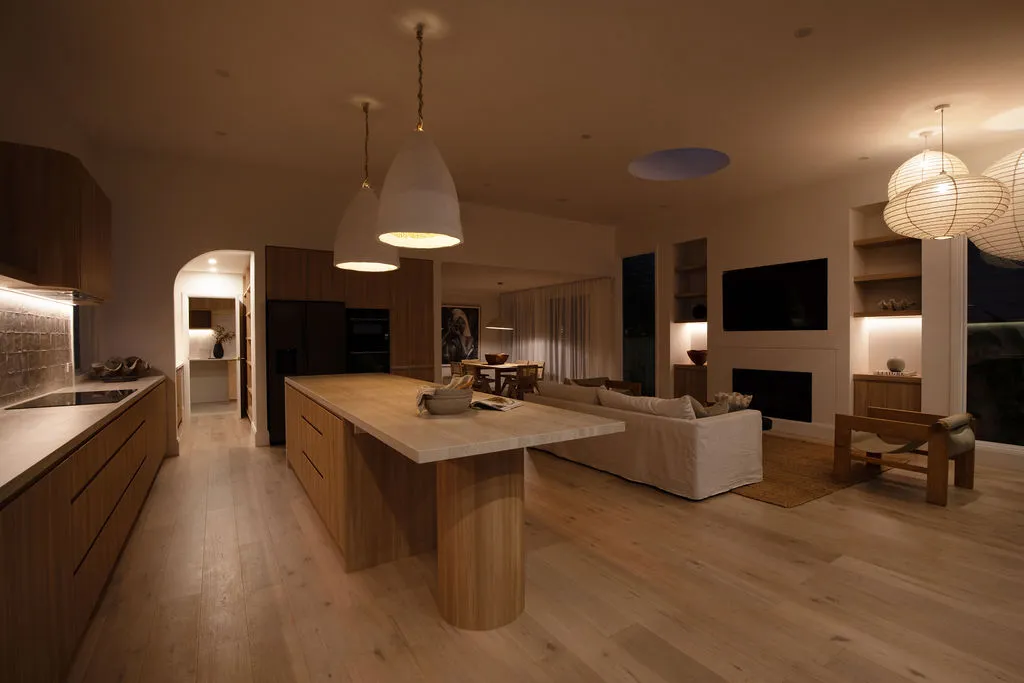
The Top 10 Flooring Mistakes Homeowners Make
Renovations are full of decisions, but flooring specifications should not be rushed. These are the most common missteps I see:
- Skipping substrate preparation
If the slab or subfloor isn’t perfectly level, dry, and treated, your boards will warp or your tiles will crack. No flooring product can cover up a bad base. - Choosing the wrong underlay
Underlay might look like a thin sheet of foam or felt, but it’s doing important work. The wrong one means noisy, hollow floors that don’t feel solid underfoot. - Laying floorboards the wrong way
Run them across the narrow side of a room and it instantly feels smaller. Get it right, and you visually extend the space. - Ignoring grain patterns
Timber and engineered boards have natural variation. Without careful selection, you can end up with jarring patches that look cheap and disjointed. - Poor tile layouts
Nothing makes a bathroom or kitchen look unfinished faster than awkward half-tiles at the edges or cuts that don’t line up. - Skipping expansion gaps
Timber and laminate expand and contract with changes in humidity. No allowance means buckling or gaps over time. - Choosing the wrong grout colour
The tile might be perfect, but grout can make or break the look. A sharp contrast highlights every line, while a tonal match can make the surface feel seamless. - Forgetting about lead times
That imported engineered oak you fell in love with? It might take 12–16 weeks to arrive. Flooring is often the last thing installed but the first thing that can hold up your schedule. - Not ordering attic stock
Life happens – pets, kids, or moving furniture can damage a section of flooring. Without extra from the same batch, repairs will never blend in perfectly. - Overlooking slip ratings
Floors need to be safe as well as stylish. In bathrooms, laundries, outdoor terraces, and pool surrounds, slip ratings aren’t optional.
Every single one of these can be avoided with a well-documented floor specification. That’s where a designer’s eye (and experience) makes all the difference.

Why Underlay is More Than Just Padding
Underlay is one of those invisible details that makes a huge difference to how your floor looks and feels day-to-day. Think of it as the buffer between the floor and the base beneath. The right underlay:
- Reduces noise transfer – critical in apartments and double-storey homes.
- Adds comfort – creating a subtle spring underfoot, especially with timber or laminate.
- Provides a moisture barrier – essential in humid coastal areas like the Northern Beaches.
- Extends flooring lifespan – by supporting the boards evenly and reducing wear.
Homeowners often overlook underlay or go for the cheapest option. But it’s one of those areas where cutting corners almost always leads to disappointment.
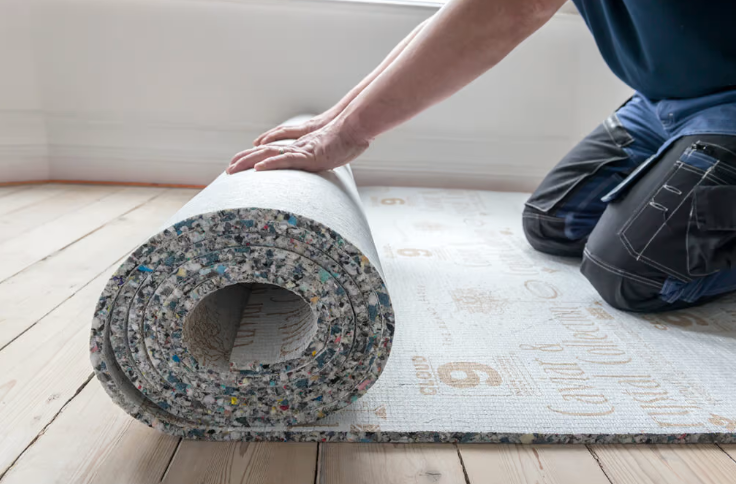
Substrates: The Foundation You Don’t See
The substrate is the surface beneath your floor, and it’s easy to forget it exists until something goes wrong. A poorly prepared substrate can sabotage even the most expensive flooring.
- Concrete slabs need to be properly cured, levelled, and tested for moisture.
- Timber subfloors may flex or creak unless reinforced and sheeted correctly.
- Existing finishes like tiles can sometimes be retained, but usually need grinding or levelling first.
This stage isn’t glamorous, but it’s critical. A good interior designer will collaborate with your builder to make sure the substrate is prepared to the right standard, saving you headaches (and money) later.
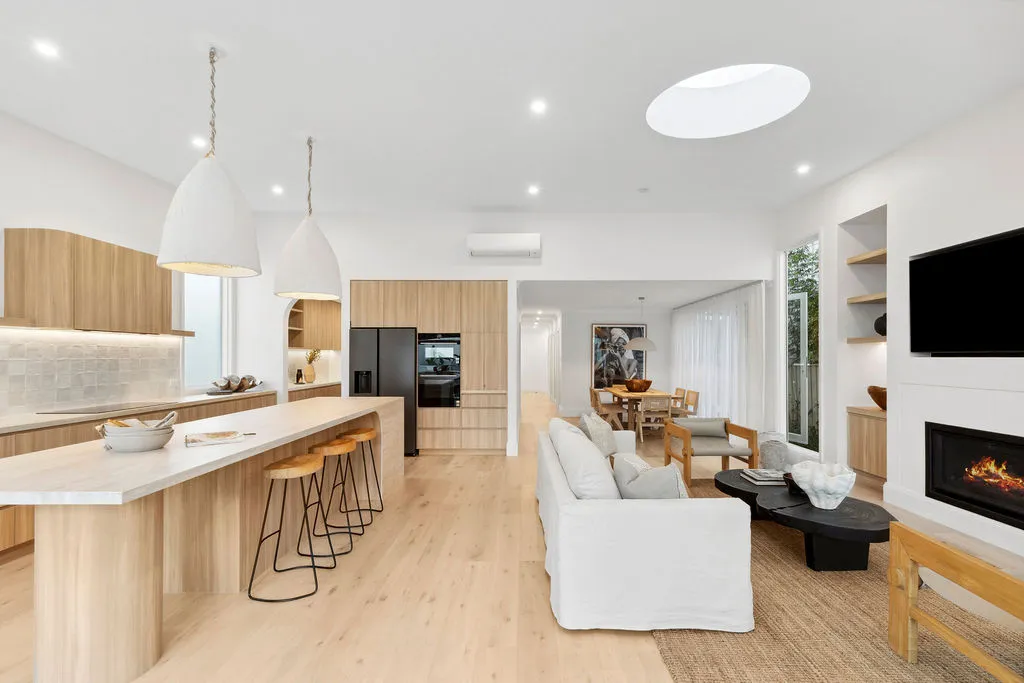
Getting Floorboard Direction Right
Floorboards aren’t just planks – they’re lines that guide your eye through a room. Run them lengthwise and they elongate the space. Run them the wrong way and the room can feel chopped up or awkward.
Transitions between rooms also need to be carefully planned. Sometimes it makes sense to continue the direction throughout the house. Other times, particularly in multi-level homes, a change of direction feels more natural. The key is that it should always be deliberate, not accidental.

Grain and Colour Variation: The Subtle Art
One of the most beautiful qualities of natural timber is variation. But too much contrast can look chaotic. With engineered timber or hybrids, repeating patterns can also look obvious unless installed thoughtfully.
It’s important to spend time selecting boards from a batch and planning how they’ll be laid. It’s the kind of detail most homeowners don’t think about, but it’s what separates a floor that feels “builder basic” from one that feels truly bespoke.

Tile Layouts That Elevate a Space
Tile choice is important, but layout is where the magic happens. A herringbone pattern feels classic and sophisticated, chevron adds dynamism, and brick bond is timelessly practical.
The trick is planning the layout before installation. That means drawing it on paper (or CAD) so you can see exactly where cuts will fall. Done right, it feels intentional and balanced. Done wrong, you’ll end up staring at an awkward sliver of tile every time you walk into the bathroom.
Grout Colours and Rectified Tiles
Grout doesn’t just fill gaps – it’s part of the design. With rectified tiles (sharp, machine-cut edges), grout lines can be kept minimal. But the colour choice is what makes or breaks the look.
A contrasting grout emphasises the pattern and rhythm of the tiles. A tonal grout blends them into a seamless surface. Both approaches can be stunning – but only if they’re considered alongside the overall design, not chosen last minute on site.
Lead Times: The Hidden Project Risk
Flooring is often installed late in a renovation, but ordered early. Some of the most popular products – wide engineered oak boards, large-format porcelain tiles – are imported with long lead times. Forgetting this can delay your entire project.
A designer factors flooring into the schedule right from the start, ensuring the product is ordered in time and stored safely until installation.
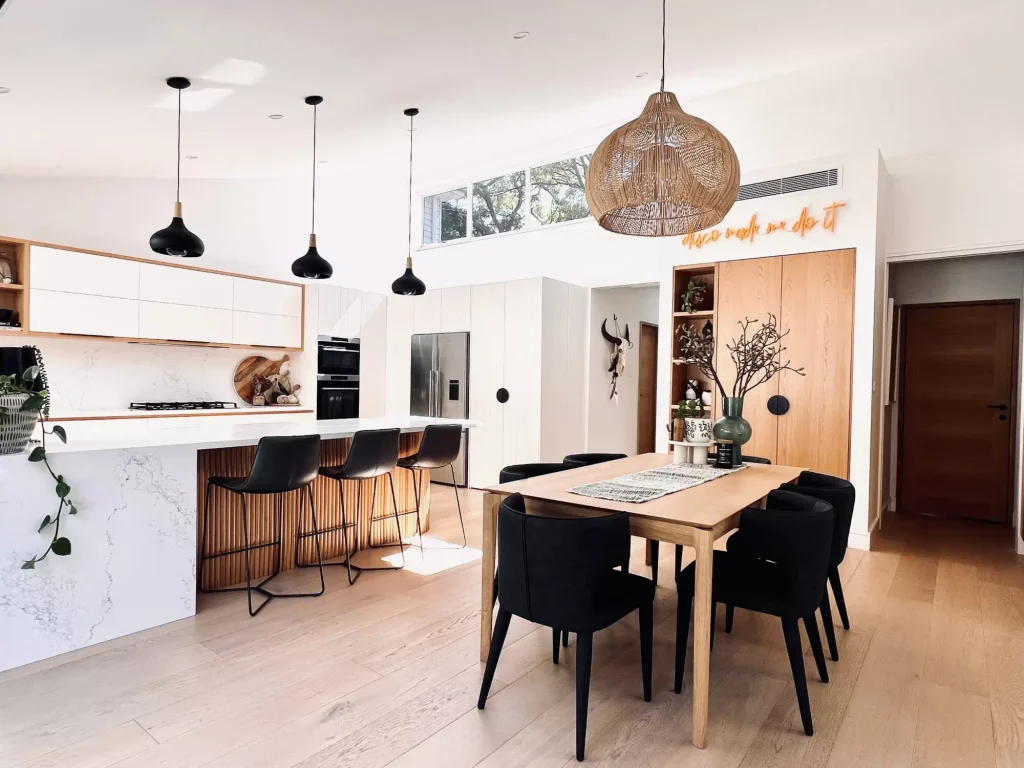
Why Ordering Extra Matters
Attic stock” sounds old-fashioned, but it simply means having extra flooring from the same batch tucked away. Timber will change – sunlight, kitchen traffic and even rug “shadows” can shift the colour over time. In spite of that, it’s still best to keep attic stock from the same batch so any future repair blends. And there’s a practical kicker: suppliers discontinue ranges and dye lots change. If it’s gone, it’s gone – so order a little extra now and save yourself the mismatch later.
Safety First: Slip Ratings
Floors aren’t just about aesthetics. In wet areas and outdoor zones, slip resistance matters. Australian standards exist for a reason, and a responsible designer will always check them before specifying a product. A floor can be beautiful and safe at the same time.
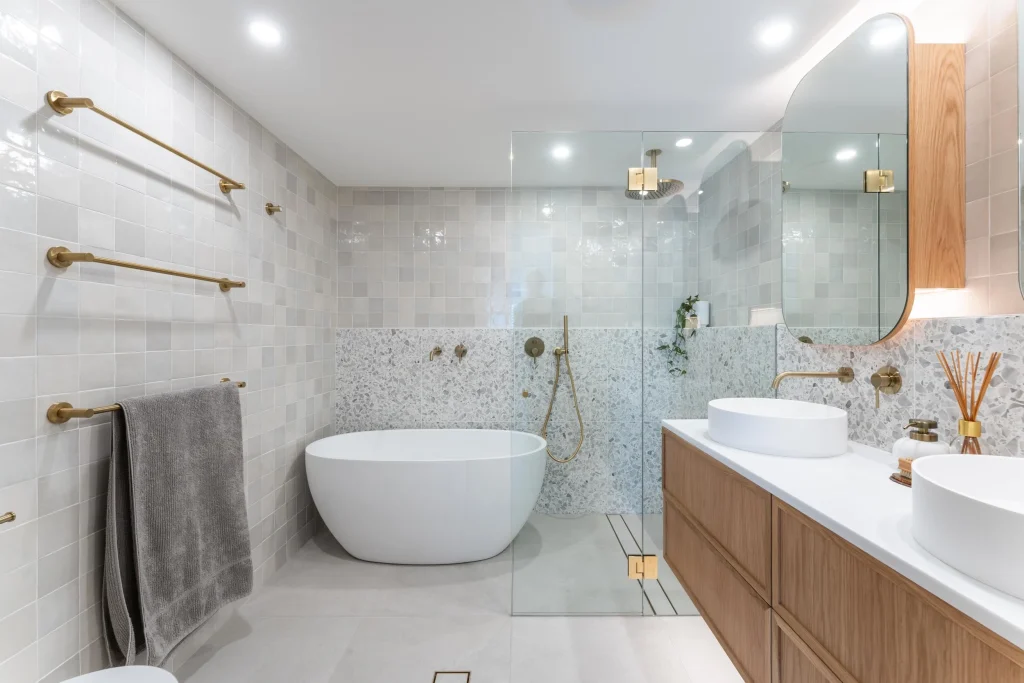
Final Thoughts
Flooring isn’t a finish you pick at the last minute. It’s one of the most important elements of your renovation – the detail you live with every single day. From underlays and substrates to grain patterns, grout colours, and lead times, these decisions deserve care and expertise.
Working with a designer ensures you don’t just get a floor that looks good on day one, but one that performs beautifully for years to come. When you invest in getting flooring right, the whole home benefits.


